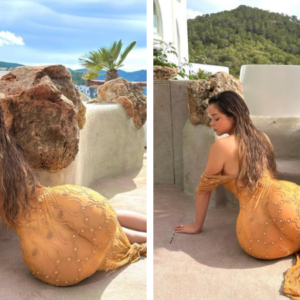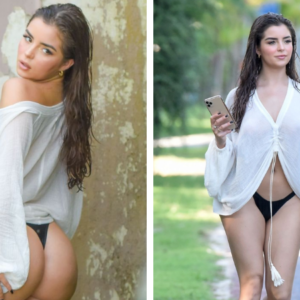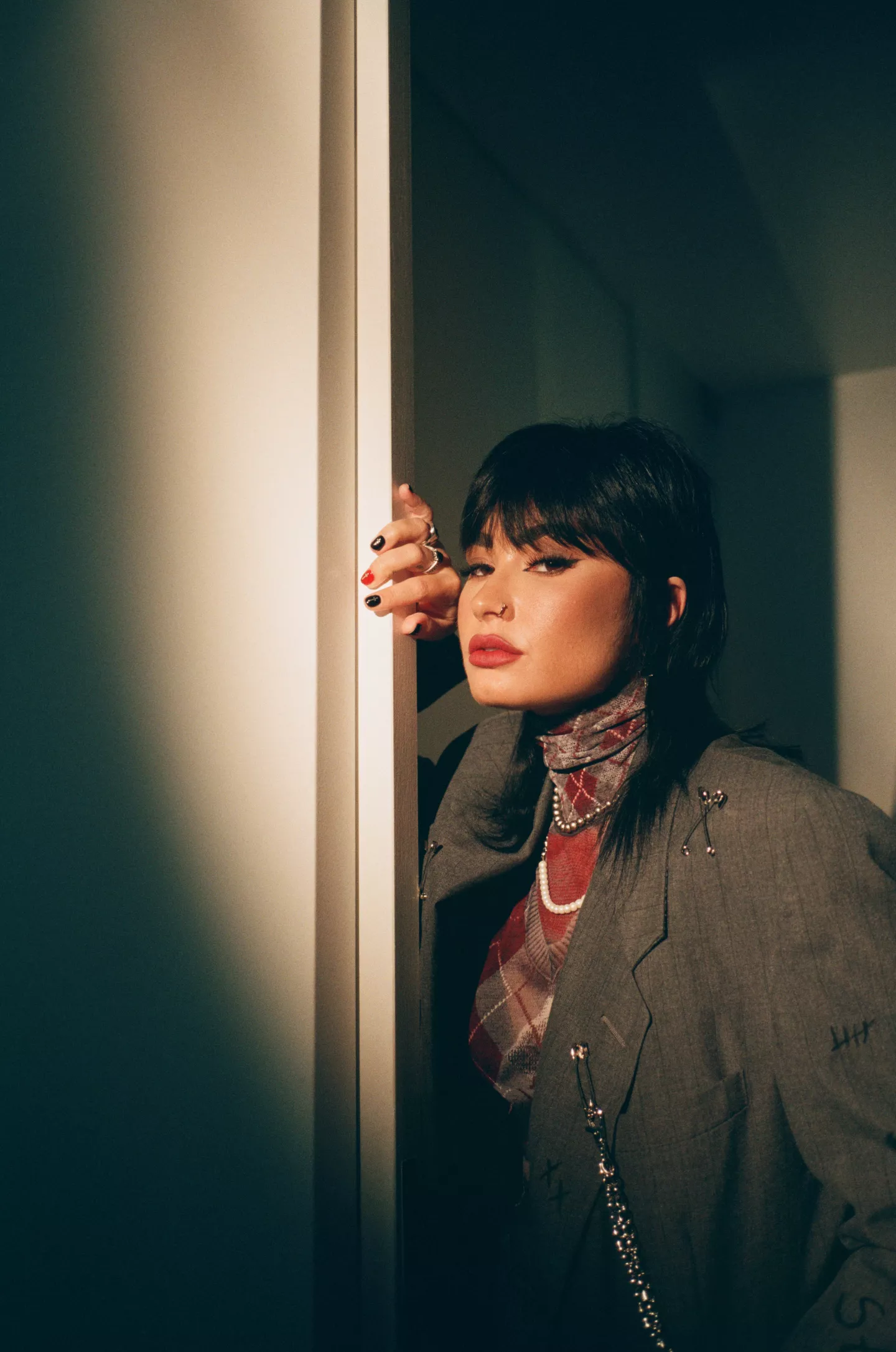 In January 2022, a month after her most recent stint in rehab, Demi Lovato drove the final stake into the heart of her child-star past.
In January 2022, a month after her most recent stint in rehab, Demi Lovato drove the final stake into the heart of her child-star past.
For the record:
11:38 a.m. Aug. 18, 2022An earlier version of this article said Lovato is 30. She will turn 30 on Aug. 20. It also said a pH๏τo of the singer with representatives from her record label and management team was taken in New York; the shoot was in Los Angeles.
At her home studio in Los Angeles, Lovato posed for a pH๏τo with representatives from her record label and management team, led by Scooter Braun, who were all, incidentally, dressed in black. At the center of the picture sat Lovato, raising two middle fingers to the camera; “a funeral for my pop music,” she captioned the image on Instagram.
Almost eight months later, inside a black-box rehearsal studio in Burbank, Lovato quietly strums a cream-shellacked Gibson electric guitar, her face obscured under her Joan Jett shag cut. Gothic crosses dangle from her ears; she wears a loose pinstripe blazer with a leather-studded collar and shiny Creeper shoes to match. She picks at one of several growing holes in her mangled fishnet stockings.
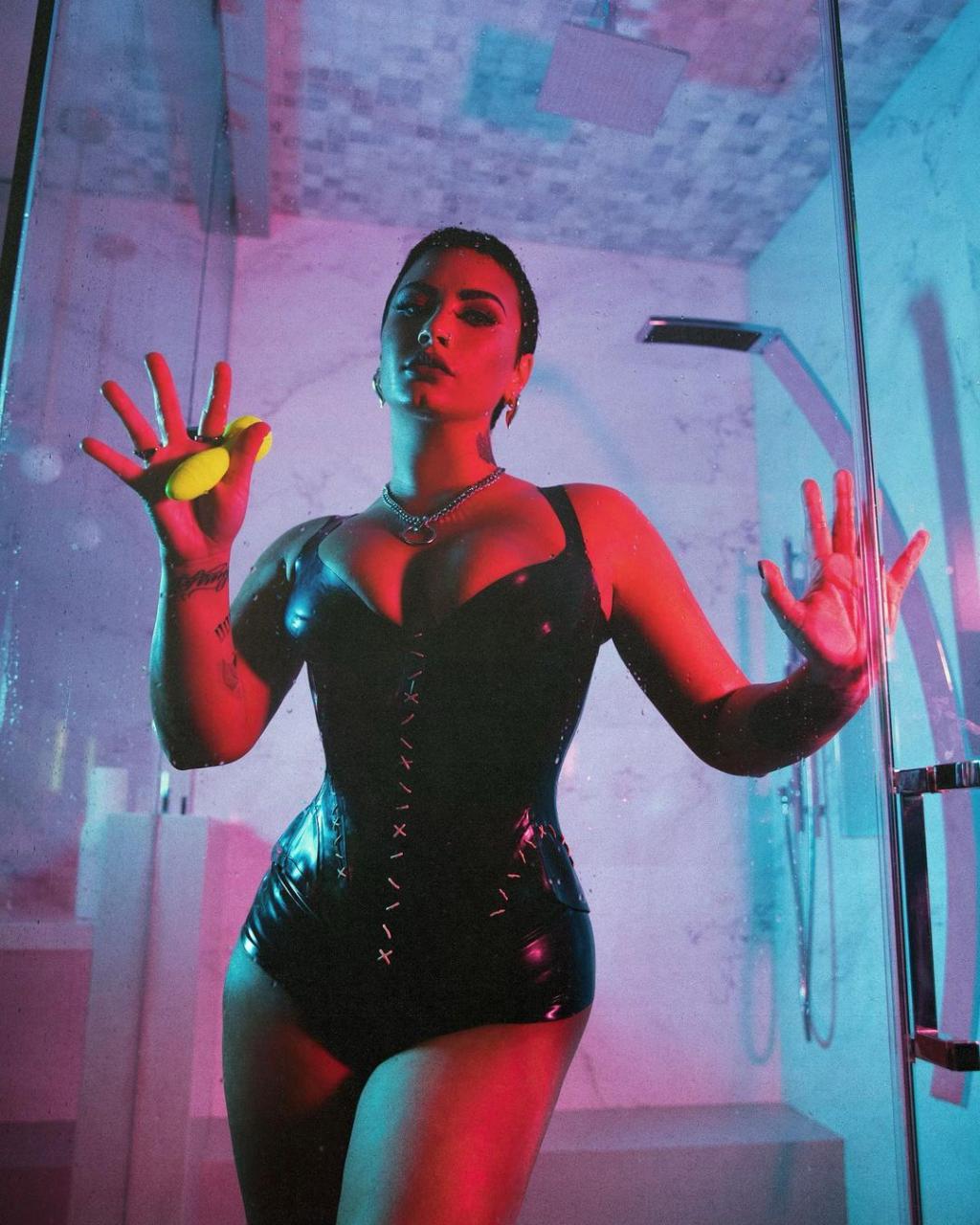
“They’re supposed to look like this,” she says with a grin.
It’s the grunge-glam aesthetic that the Grammy-nominated hitmaker, who turns 30 on Aug. 20, has been jonesing to try for ages, at least since she first belted out pop-punk-flavored show tunes with the Jonas Brothers in the 2008 Disney Channel movie “Camp Rock,” eventually empowering fellow Disney performers like Miley Cyrus and Olivia Rodrigo to channel their inner rock stars and pick up guitars.
Lovato, whose every album has cracked the top five on the Billboard 200, is embracing her shadow side on her new LP, “Holy Fvck,” out Aug. 19. It’s a thundering, hard-rock horror maze through Lovato’s psyche as a superstar in recovery — not just from drugs and alcohol but also from the Sєxual and spiritual repression that had long eaten away at her sense of self.
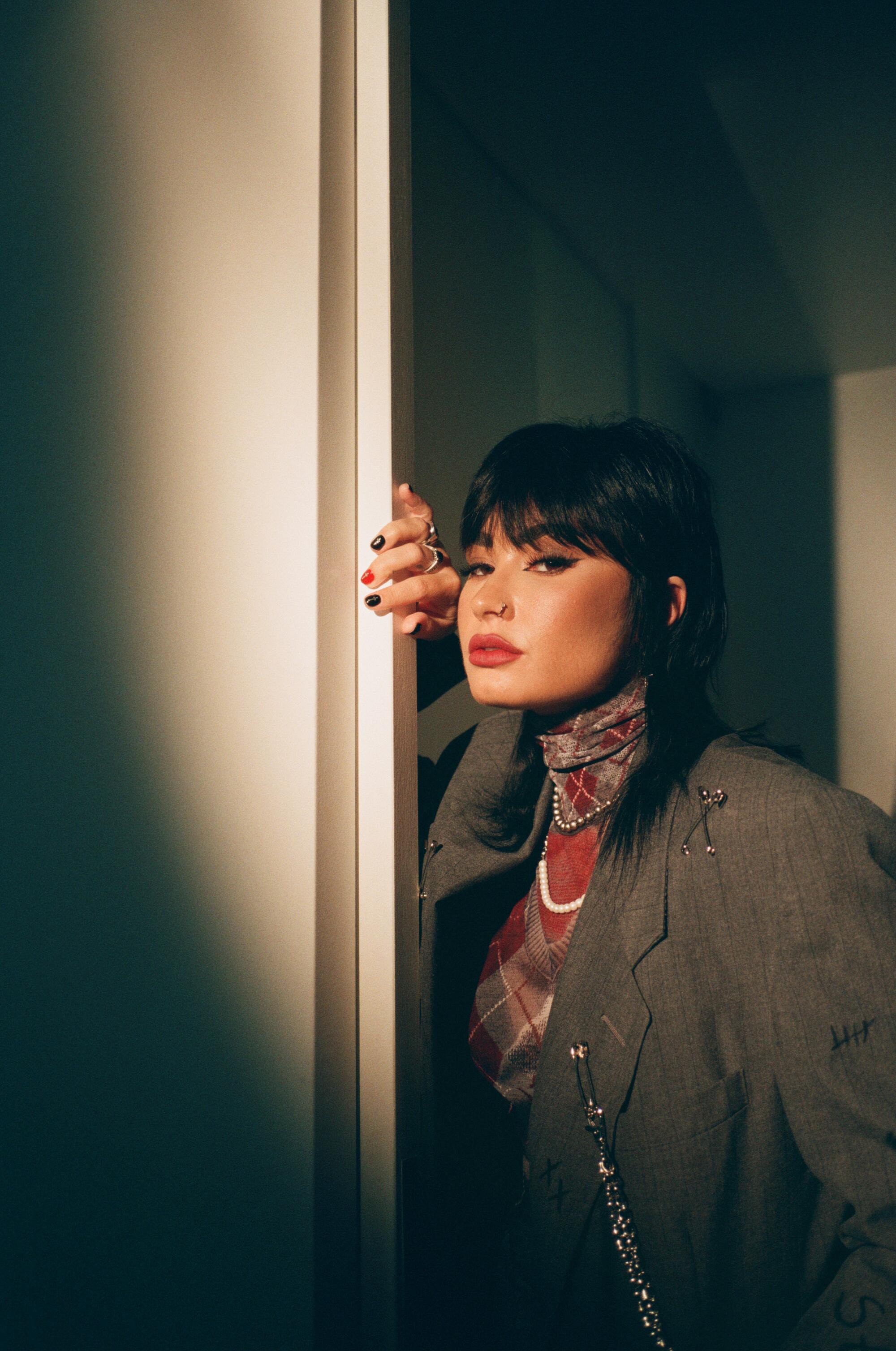
When we meet, Lovato appears healthy and content, though slightly fatigued from a recent bout with COVID-19. She’s practically buzzing in anticipation for the album and her first tour in four years, which will feature gritty versions of pop hits like “Sorry Not Sorry” and “Heart Attack.”
“You can’t have light without dark,” she says. “The dicH๏τomy was really important to me, and I had to take my anger out of the shadows in order to heal. I am owning my dark side, and it doesn’t have to take me down.”
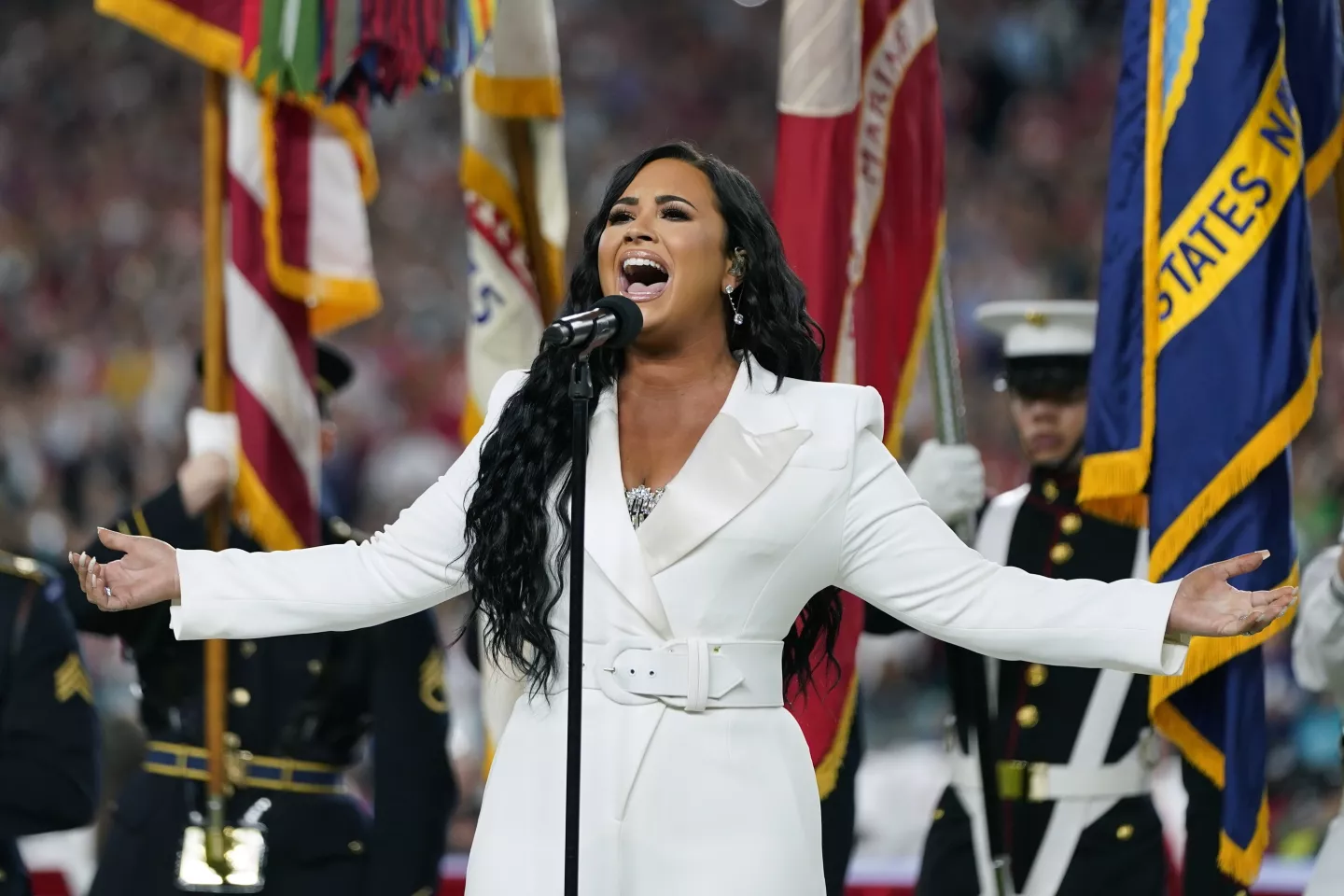
Lovato’s road to stardom has been riddled with obstacles. From the time she was 18, the singer-actor has bounded in and out of treatment programs for drug addiction, bulimia, self-harm and trauma stemming from at least two instances of Sєxual ᴀssault.
She addressed the cycle most acutely on her 2021 double album, “Dancing With the Devil … the Art of Starting Over,” and its ᴀssociated YouTube documentary series, which detailed the near-fatal 2018 drug overdose that curtailed Lovato’s last tour. Triggered by a cocktail of oxycodone laced with fentanyl, Lovato suffered a heart attack, multiple strokes and brain damage that left her legally blind.
Against the advice of her friends, including pop legend Elton John, Lovato opted to become “California sober,” an approach that accommodates the use of cannabis and moderate alcohol intake. She recalls thinking when she wound up back at a treatment center last November: “I always take it too far. This is the last time. I’m not doing this again.”

Lovato was born in Albuquerque to Dianna De La Garza, a former Dallas Cowboys cheerleader, and Patrick Lovato, a musician and audio engineer of Hispano descent. They divorced when Demi was just 2 years old; her father, prone to violent outbursts and substance abuse, remained estranged from his children until he died of cancer in 2013. Her mother, who later remarried, moved young Demi and her older sister to Dallas.
Lovato began a demanding regimen of dance, drama and music classes; she also competed on the child beauty pageant circuit. In 2002, she starred as Angela on the children’s show “Barney and Friends” and eventually played the lead in Disney Channel originals like the show “Sonny With a Chance” as well as the “Princess Protection Program,” which co-starred Selena Gomez, and “Camp Rock.”
Meanwhile, Lovato struggled with bullies in school, to the point where she withdrew and completed her high school diploma at home. Depressed and reeling from the trauma of a rape she said occurred when she was 15, Lovato developed a cocaine habit, which she has said was enabled by promoters, and began cutting herself. “There are things that happened within that time that I’m still overcoming,” she says.
Once the “Camp Rock” soundtrack soared to No. 3 on the Billboard 200 chart, Lovato was tapped by Disney label Hollywood Records to unleash her pop-rock potential on two records: 2008’s “Don’t Forget” and 2009’s “Here We Go Again,” which charted at No. 2 and No. 1, respectively. “Who says I can’t wear my Converse with a dress?” Lovato sang defiantly in her first solo hit, 2008’s “La La Land” — a battle cry against the stringent parameters of both girlhood and child stardom.
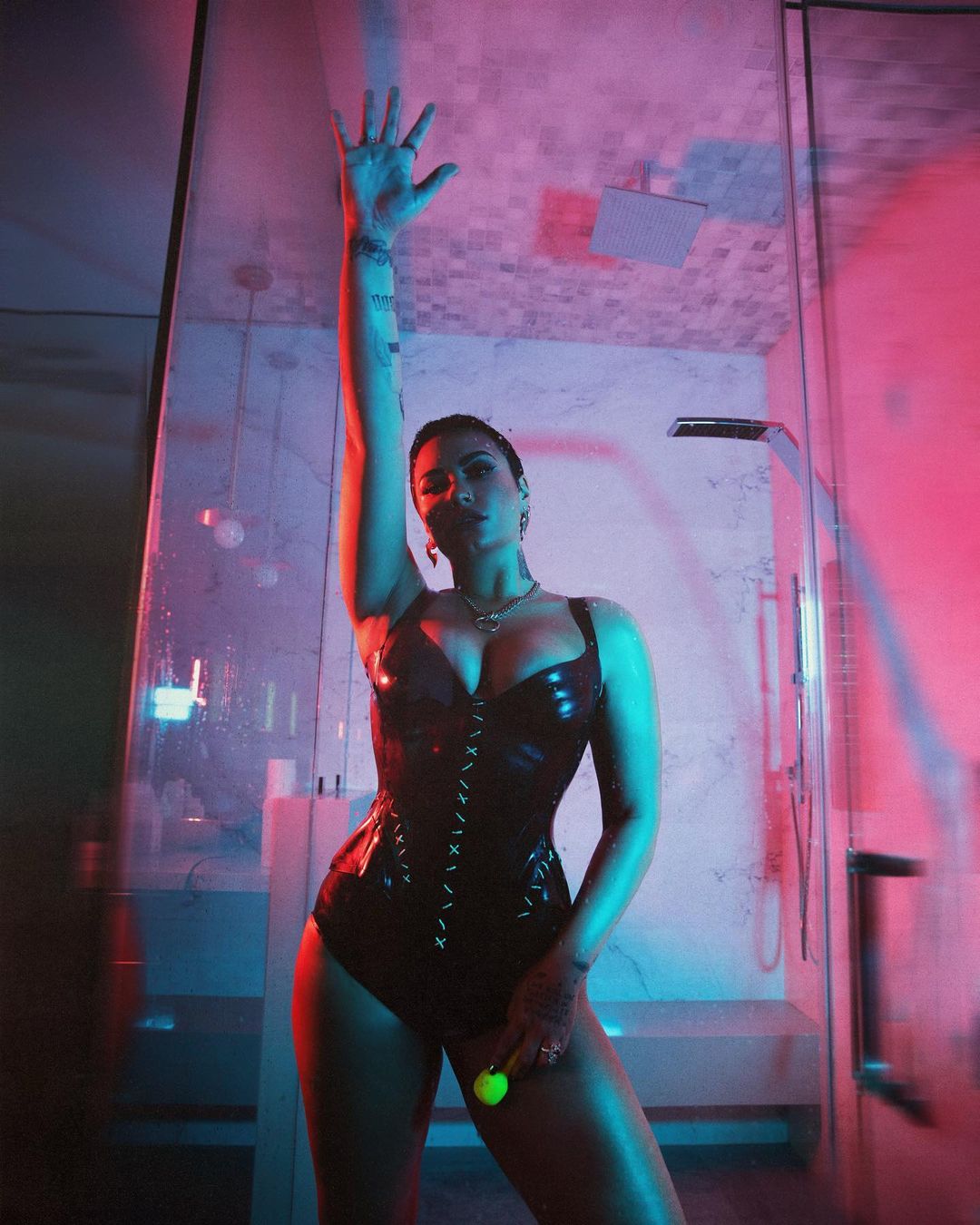
While writing those early records, she sank her teeth into the tortured melodrama of acts like emo mainstays Paramore, Christian metal band Flyleaf and the pop-rock singer Kelly Clarkson, whose songs Lovato wore out in the privacy of her headphones. From them, Lovato learned to throw her body into her otherwise supple voice, suffusing every peak and valley of a song with a magnitude fitting for rock.
“Back when I worked on Disney Channel, I knew I could go this hard,” says Lovato. “But it wasn’t until recently that I felt like I could accomplish this sound. I’ve had a lot of anger since coming out of treatment. These new songs are about taking the power back and owning my anger — something I pushed aside for years, because I thought it would make me less spiritual.”

